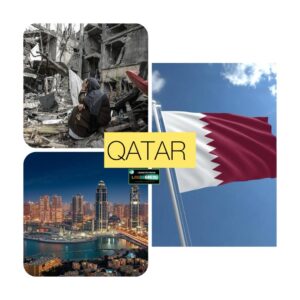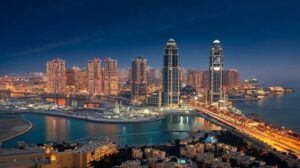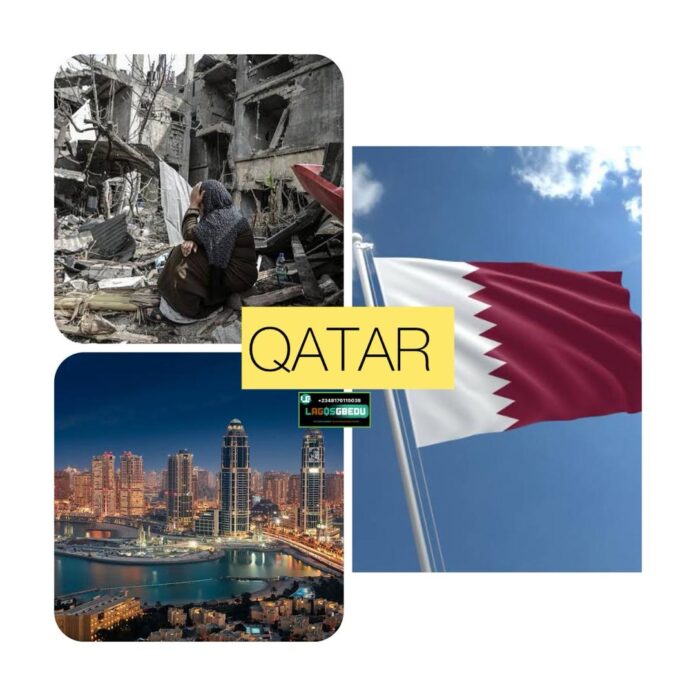
Before 1996, Qatar was a poor barren desert of 320,000 people
Yesterday, they casually spent $96 billion on Boeing Jets for Qatar airways- the largest single aircraft purchase in history

Their $450B fund owns more of London than the British Royal Family
How desert rulers engineered the West’s silent takeover:
The journey starts with a “disappointing” discovery.
In 1971, Qatar and Shell found something beneath the Persian Gulf they thought was worthless.
Not oil (which they wanted). Just natural gas.
But this disappointing find would change everything:
They’d stumbled upon the North Field—the largest natural gas reservoir ever discovered.
This field contains about 10% of global gas reserves.
Qatar couldn’t do much with it yet. The technology to export gas profitably didn’t exist.
It sat untapped for decades…
Then in 1995, everything changed.
Sheikh Hamad bin Khalifa Al Thani overthrew his father in a bloodless coup.
The new leader saw potential in that untapped gas field.
He made a $20B bet on liquefied natural gas when experts called it foolish:
The gamble paid off spectacularly.
By 2006, Qatar became the world’s largest LNG exporter.
Their GDP per capita soared from $2,755 in 1990 to over $50,000 by 2020.
Billions flooded into the tiny nation monthly.
What they did with that money was remarkable:
Qatar deployed cash strategically worldwide.
They created the Qatar Investment Authority (QIA) in 2005—one of the most aggressive sovereign funds ever.

Their London shopping spree was unprecedented:
• Bought Harrods for $2B
• Acquired stake in Canary Wharf
• Built The Shard—Western Europe’s tallest building
• Bought 20% of Heathrow Airport
• Acquired Chelsea Barracks
But they didn’t stop at London:
Qatar purchased Paris Saint-Germain (PSG) and made it a global powerhouse.
They acquired a 10.5% stake in Volkswagen Group.
They built Qatar Airways into one of the world’s top airlines.
All from a country smaller than Anambra state
Their most brilliant move? Creating Al Jazeera in 1996.
With a $137M grant, it revolutionized Arabic media and expanded globally.
This single investment gave Qatar unprecedented soft power across the Middle East.
But there’s a darker side:
Qatar’s transformation required massive labor.
The solution? Import millions of workers from South Asia.
Today, 88% of Qatar’s 2.8M residents are foreign workers without citizenship.
Many face conditions that human rights groups have condemned.
The nation performs a dangerous balancing act.
They host America’s largest Mideast military base while maintaining ties with Iran.
In 2017, Saudi Arabia blockaded Qatar for 3.5 years, accusing them of supporting terrorism.
Qatar survived by reshaping supply chains.
Their natural gas gamble keeps paying off.
When Russia invaded Ukraine, Europeans desperate for non-Russian gas turned to Qatar.
In 2019, Qatar launched a $30B North Field expansion to increase LNG exports 64% by 2026.
Perfect timing.
This unlikely power broker shows how wealth transforms global influence.
With just 320,000 citizens, Qatar wields power on par with nations 100x its size.
Money, deployed strategically, creates influence that transcends limitations.
A masterclass in leverage.


![[ Update ] DOUBLE KTB ACADEMY AND DOUBLE KTB HOPE ACADEMY](https://lagosgbedu.com/wp-content/uploads/2025/06/a52cc607-663d-4e91-b455-4fa33b6c6968-218x150.jpeg)
![[ Music ] Mayorkun – Interlude (Industry Girl) Ft. Dremo, The Flowolf & Michii MP3 Download](https://lagosgbedu.com/wp-content/uploads/2025/06/IMG_0590-218x150.png)